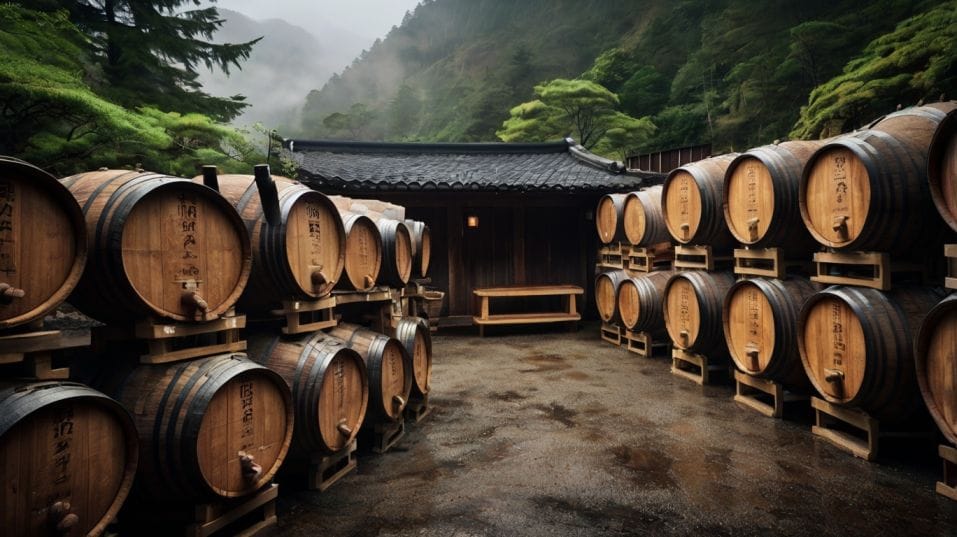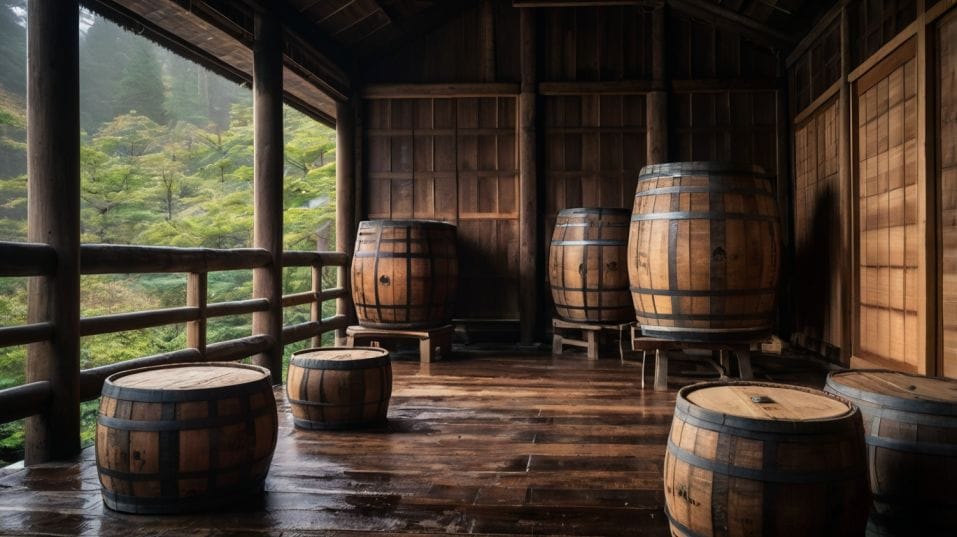Why Japanese Whiskey Ages Faster Than Scotch
Learn why Japanese whiskey matures faster than Scotch—and how climate, oak, and philosophy help young bottles taste unexpectedly rich.

What if your favorite 8-year-old whiskey drank like a 20-year-old? In Japan, it often does—and not by accident. From fierce seasonal swings to rare local oak, Japanese distillers craft whiskeys that evolve fast and drink deep.
If you’re new to whiskey, this changes everything you think you know about age. It’s not just a number. It’s a story of chemistry, climate, and culture—and it’s time to taste it for yourself.
Climate: The Hidden Accelerator
Climate isn’t just a footnote in whiskey aging—it’s a main character.
In Japan, the environment forces whiskey to evolve faster, pushing it through intense cycles of change that leave a real mark on flavor and texture. This isn’t about shortcuts; it’s about exposure.
Hotter Summers, Harsher Winters
Japan's climate isn't gentle. Summers are hot, winters are sharp, and humidity swings wildly. This isn’t a side note—it’s the engine behind Japan’s fast-track maturation.
Hotter summers cause casks to expand, drawing the whiskey deep into the wood. When temperatures drop, the wood contracts and pushes that liquid back out, now loaded with new flavor compounds like vanillins, tannins, and lactones.
That inhale-exhale cycle happens in Scotland, too—but at a slower pace, thanks to its more temperate maritime climate. The result?
Japanese whiskey gets more action per year. It’s not aging "faster" in a gimmicky sense. It's undergoing a more intense chemical transformation in a shorter time frame.
So if a Japanese whiskey tastes like a 20-year-old Speyside but it's only eight years old, believe your palate. Age is about what happens during those years—not how many of them passed.

Barrel Choice: Precision Over Tradition
Cask selection isn’t an afterthought in Japan—it’s a deliberate move that shapes how whiskey matures and what it becomes.
The right wood can deepen complexity, speed up integration, or layer in unexpected character. And no wood captures that philosophy better than one unique to Japan.
The Mizunara Factor
Japanese distillers don’t treat barrels like background props—they treat them like instruments.
Every cask is selected for what it adds, how fast it adds it, and how it complements the distillate inside. Yes, like Scotch, many Japanese producers use ex-bourbon and ex-sherry barrels.
But here’s where things get interesting: Japanese whiskey often incorporates Mizunara oak, a local species that's wildly different from American or European oak.
Mizunara is porous, irregular, and challenging to coop—some distillers lose entire casks to leaks. But if managed well, it delivers a spicy, incense-like character with coconut, sandalwood, and temple-like aromas.
Because Mizunara breathes more, it also evaporates more. This means higher angel’s share—sometimes double what you’d see in Scotland—and more concentrated flavor in less time.
You’re tasting wood, but you’re also tasting transformation. It's aggressive. It's delicate. It's unpredictable. But when it hits, it's unforgettable.
Distillation: Building in Complexity Early
Maturation gets most of the credit, but what happens before the cask is just as critical. In Japan, distillers don’t wait for age to create complexity—they build it in from the start. The distillation process is where the foundation is set.
Congeners and Control
Before whiskey ever touches oak, the distillation process determines how much potential that spirit has to evolve.
In Japan, distillation is treated like an art form, but it's rooted in science. Many distilleries run their stills slowly, at lower temperatures, and with high reflux. This creates a more nuanced, congener-rich distillate.
Congeners are the flavor compounds formed during fermentation and carried through distillation.
They're responsible for fruity, floral, spicy, or earthy notes—and they’re also what oak interacts with most during aging. More congeners in the raw spirit means more layers to develop during maturation.
Think of it like seasoning a cast iron pan before cooking: the more care you put in early, the better the results later.
Scotch often relies on long aging to build complexity over time. Japanese whiskey starts with complexity in the spirit itself and lets the cask refine it quickly.
Philosophy: Flavor Over Time
Behind every great whiskey is a belief system—a way of thinking about what matters most in the glass. In Japan, the goal isn’t just age or tradition. It’s about creating something that feels complete, no matter how long it’s been in the barrel.
Harmony Over Heritage
Scotland’s whiskey culture is built on legacy. Time is revered. Age statements are milestones. Consistency across decades is the gold standard.
Japan plays a different game. The focus is harmony—not just balance in the glass, but balance between elements: spirit, wood, climate, and time.
In Japan, if a whiskey tastes whole at five years, it gets bottled at five. There’s no pressure to wait 12 or 18 years just to match a market expectation.
That freedom allows for younger releases that drink like older ones, and for blends that mix older and younger components in ways that defy traditional Scotch blending logic.
You’re not just drinking years—you’re drinking intent. And that’s why so many Japanese whiskies without age statements still manage to taste refined, complete, and surprisingly deep. It’s not about hiding age. It’s about making age irrelevant.
What This Means for Tasting and Collecting
Understanding why Japanese whiskey matures faster isn’t just trivia—it changes how you taste and what you choose to collect.
When you know what drives maturity beyond the label, you stop relying on age statements and start trusting your senses.
Tasting with Intention
Once you understand how Japanese whiskey matures, you stop judging bottles by the numbers.
A 10-year-old Japanese whiskey might give you the oak, polish, and flavor density of a 20-year-old Highland malt. That doesn’t make it better—it just means it got there differently.
When tasting, pay attention to the integration. Does the wood feel fused with the spirit? Are the flavors layered, or just loud? Can you taste fruit, grain, and barrel in equal parts? These clues matter more than the calendar date on the label.
If you’re collecting, start valuing character over count. Build a shelf that tells a story of regions, climates, and styles—not just one stacked with big numbers and dusty trophies.
And when someone tells you a bottle’s “too young,” ask yourself this: do you trust the number, or your own palate?
Final Thoughts
Japanese whiskey doesn’t age faster because it’s trying to cheat time. It ages faster because every variable—from climate to oak to distillation—is turned up to full volume. It’s not rushed. It’s intentional.
The next time you're browsing bottles, pause before chasing the highest age statement. Try something young that smells older.
Taste something soft that hits hard. Build your palate by exploring how climate, culture, and craft shape the liquid—not just how long it sat in a barrel.
There’s whiskey out there right now that's ready long before you expect it to be. Open it. Pour it. Learn from it. That’s how you move from curious beginner to confident drinker—one bold sip at a time.




